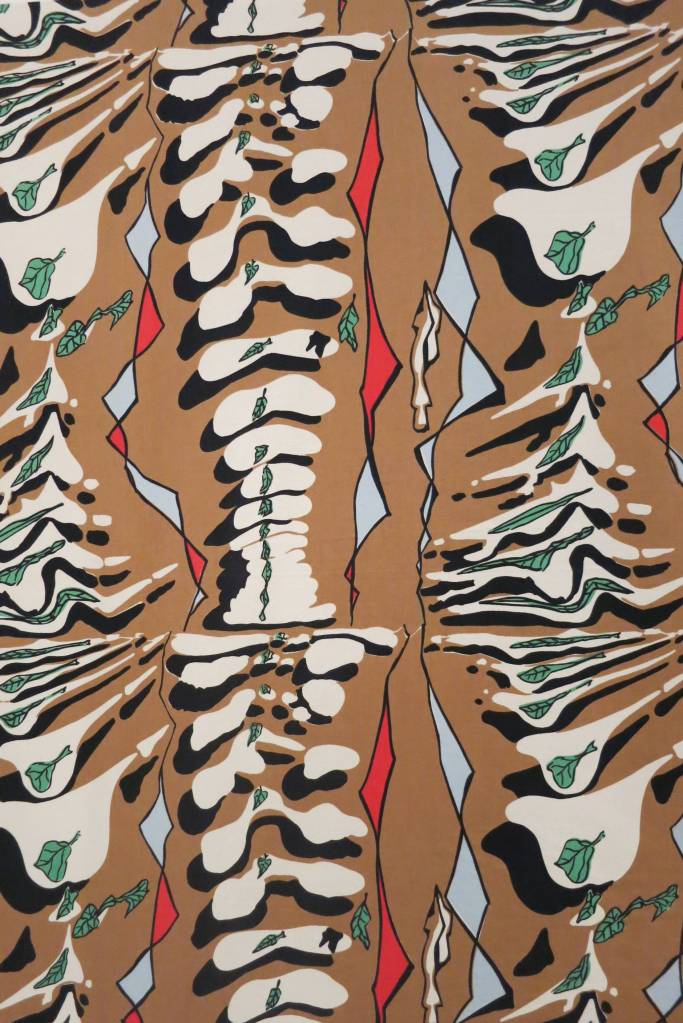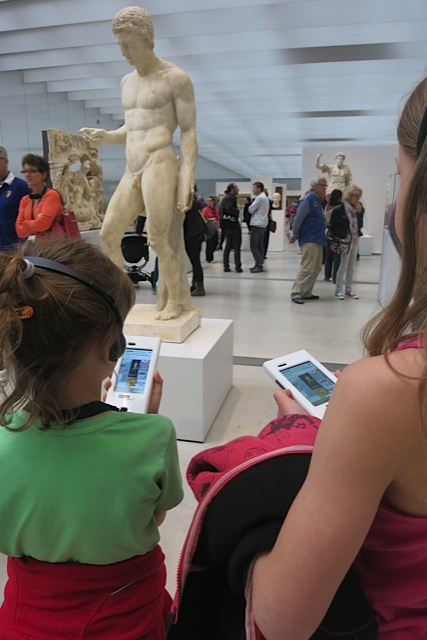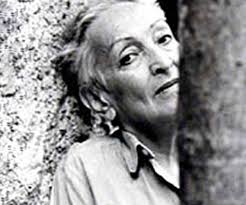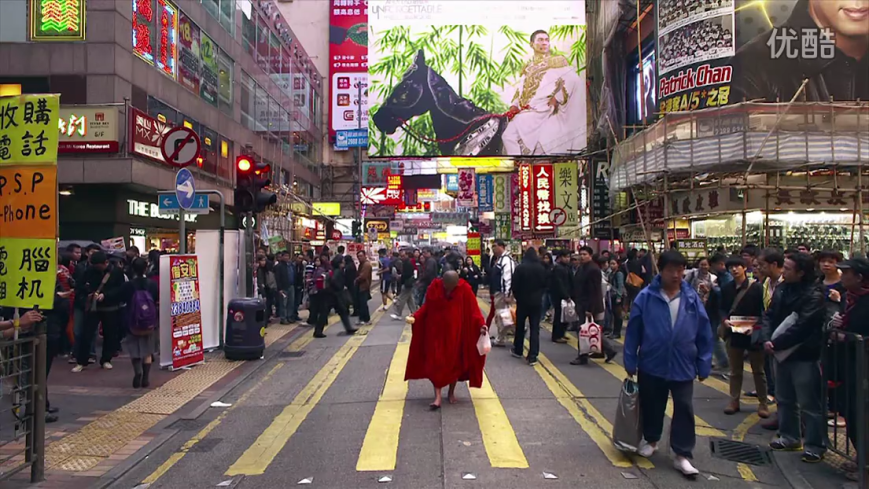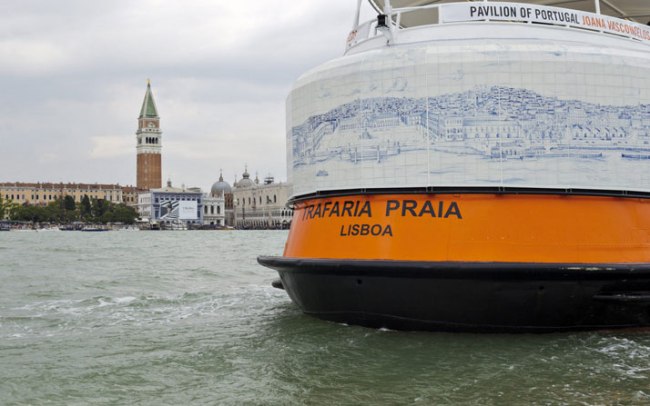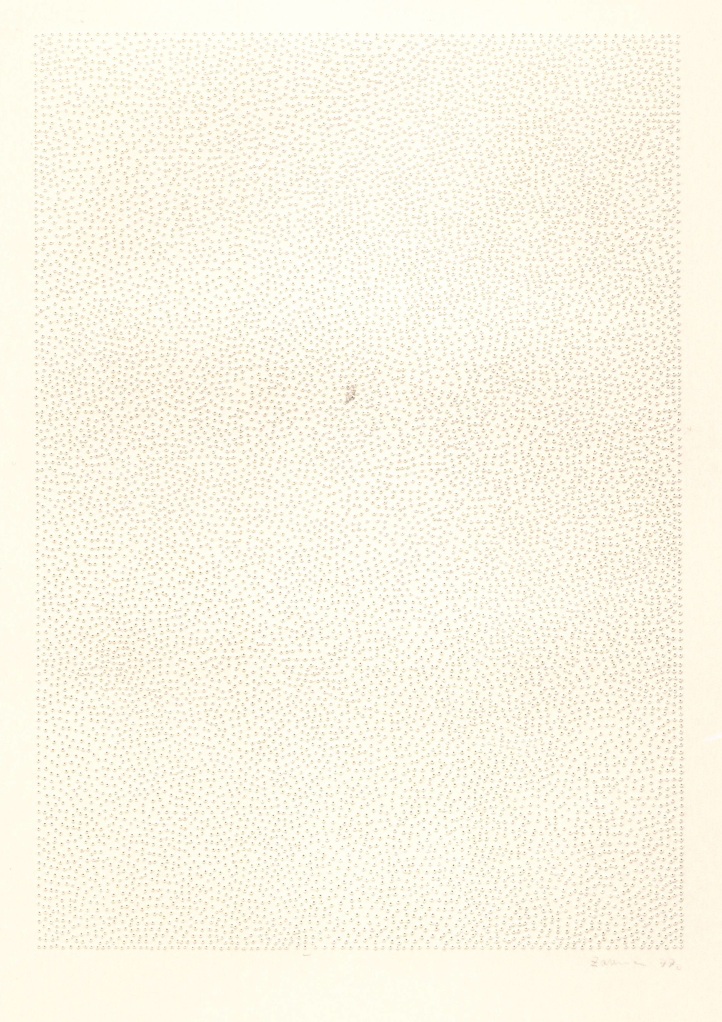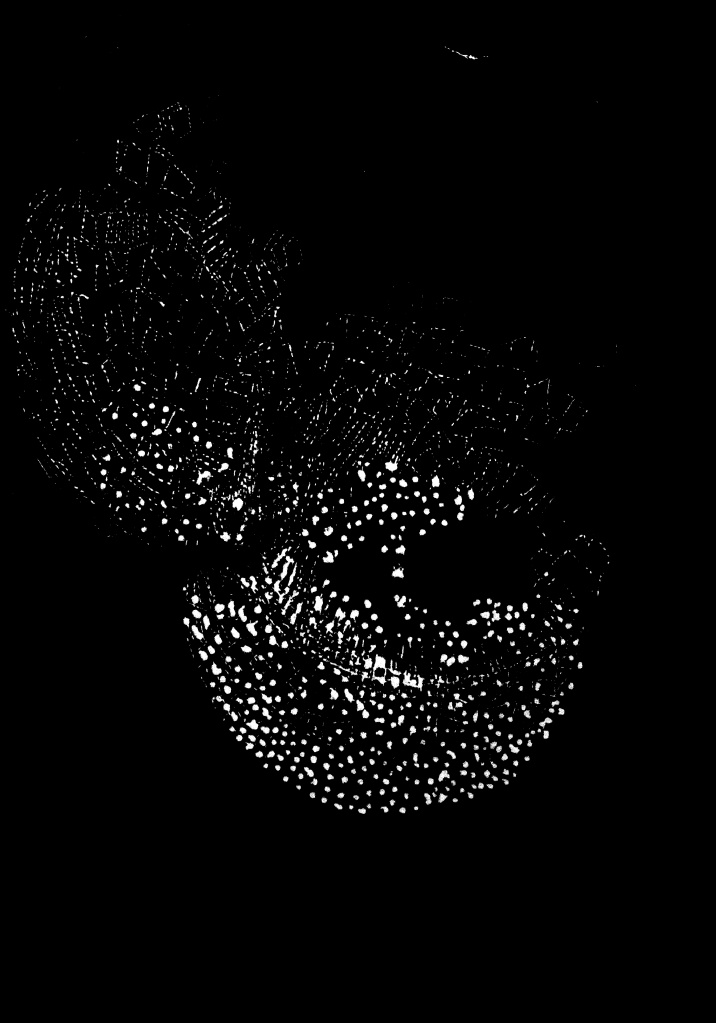After the Second World War, the attitudes to art changed. The idea that art was the privilege of the wealthy began to fade. Many artists looked for ways to make their work less elitist and more appealing to a broader audience. They discovered design as a means to achieve this. Like graphic design and book illustrations, printing their designs on fabric was a logical step.
In the post-war era, an enthusiasm for modernity and new ways of living permeated the American society, and nothing showed a commitment to modernity more clearly than an association with modern art.

Pablo Picasso with his second wife Jacqueline Roque. She wears a dress made from Picasso’s textile ‘Notes’ for Fuller Fabrics, ca.1955.
In the mid-1950s, an ambitious collaboration between the New York-based Fuller Fabrics company and several artists produced a line of prints by Pablo Picasso, Joan Miró, Fernand Léger, Marc Chagall and Raoul Dufy. Consumers were given access to a Joan Miró dress or a Salvador Dalí tie.
Even Pop artist Andy Warhol turned his hand to textiles.
In 1956, the sculptor Eduardo Paolozzi and the photographer Nigel Henderson started the art collective Hammer Prints in Essex, UK. Together with their wives, Freda Paolozzi and anthropologist Judith Stephen, they collected images from advertisements, cartoons, ethnographic and other scientific sources and translated these into patterns which they screen printed on fabric, tiles, wall paper etc. They produced some of the most innovative and influential designs of that time in Britain.

Eduardo Paolozzi and Nigel Henderson – ‘Barkcloth’, screen-printed by the artists themselves on cotton twill furnishing textile, 1955.
The distinction between fine and applied art started to blur in the 50’s and that’s beautifully illustrated in this exposition “Artist Textiles-Piccaso to Warhol” at the Textile Museum in Tilburg (The Netherlands) till 14 Sep 2014. All the pictures shown were taken in the exposition.


